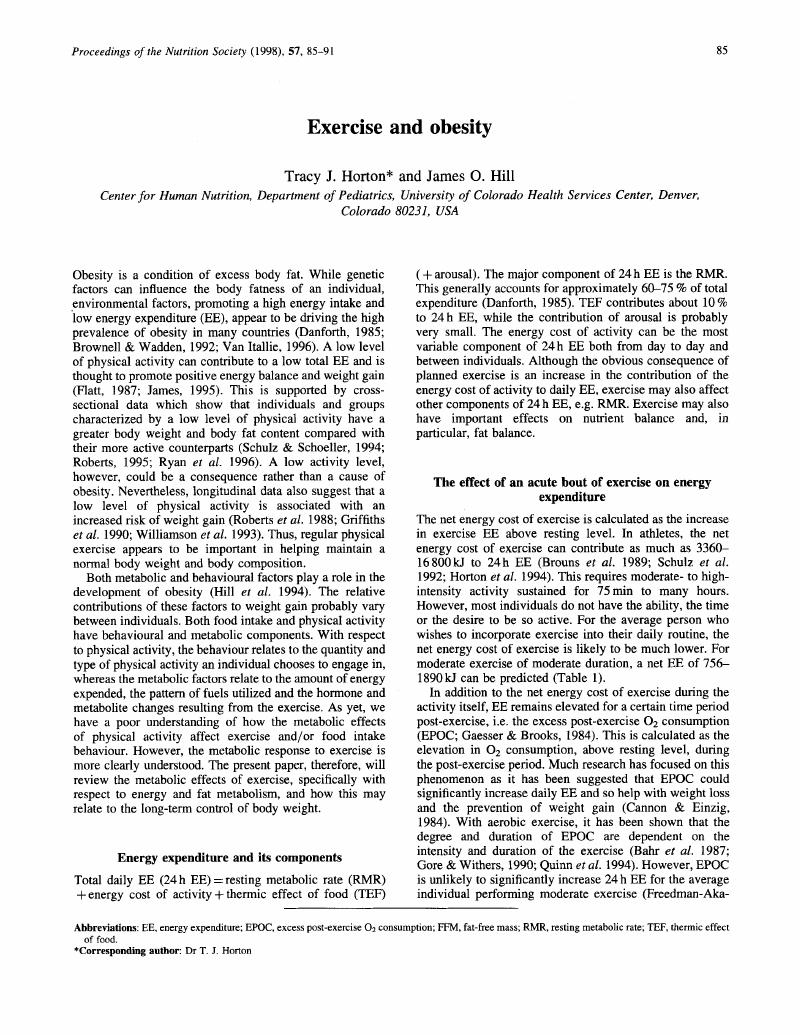Crossref Citations
This article has been cited by the following publications. This list is generated based on data provided by Crossref.
Martinez, J. Alfredo
2000.
Body-weight regulation: causes of obesity.
Proceedings of the Nutrition Society,
Vol. 59,
Issue. 3,
p.
337.
Votruba, Susanne B
Horvitz, Micah A
and
Schoeller, Dale A
2000.
The role of exercise in the treatment of obesity.
Nutrition,
Vol. 16,
Issue. 3,
p.
179.
Pedrosa, Rogerio G.
Tirapegui, Julio
Rogero, Marcelo M.
de Castro, Inar A.
Pires, Ivanir S.O.
Salgado, Maristela M.
and
Ueda, Mirthes
2004.
Assessment of the nutritional status of rats submitted to food restriction and/or to physical exercise.
Nutrition Research,
Vol. 24,
Issue. 11,
p.
923.
Hill, James O.
2006.
Understanding and Addressing the Epidemic of Obesity: An Energy Balance Perspective.
Endocrine Reviews,
Vol. 27,
Issue. 7,
p.
750.
Banu, Jameela
Bhattacharya, Arunabh
Rahman, Mizanur
and
Fernandes, Gabriel
2008.
Beneficial effects of conjugated linoleic acid and exercise on bone of middle-aged female mice.
Journal of Bone and Mineral Metabolism,
Vol. 26,
Issue. 5,
p.
436.
Söderlund, Anne
Fischer, Annika
and
Johansson, Titti
2009.
Physical activity, diet and behaviour modification in the treatment of overweight and obese adults: a systematic review.
Perspectives in Public Health,
Vol. 129,
Issue. 3,
p.
132.
Panissa, Valéria Leme Gonçalves
Bertuzzi, Rômulo Cássio de Moraes
Lira, Fábio Santos de
Júlio, Ursula Ferreira
and
Franchini, Emerson
2009.
Exercício concorrente: análise do efeito agudo da ordem de execução sobre o gasto energético total.
Revista Brasileira de Medicina do Esporte,
Vol. 15,
Issue. 2,
p.
127.
Kim, Min Jae
Hong, Sung Hyun
Cho, Wonhee
Park, Dong-Hyuk
Lee, Eun-Byeol
Song, Yoonkyung
Choe, Yong-Sahm
Lee, Jun Ho
Jang, Yeonji
Lee, Wooyoung
and
Jeon, Justin Y.
2020.
Breath Acetone Measurement-Based Prediction of Exercise-Induced Energy and Substrate Expenditure.
Sensors,
Vol. 20,
Issue. 23,
p.
6878.
Nagamine, Koichiro
Mineta, Daiki
Ishida, Koji
Katayama, Keisho
and
Kondo, Takaharu
2023.
Mixed effects of moderate exercise and subsequent various food ingestion on breath acetone.
Journal of Breath Research,
Vol. 17,
Issue. 1,
p.
016004.





